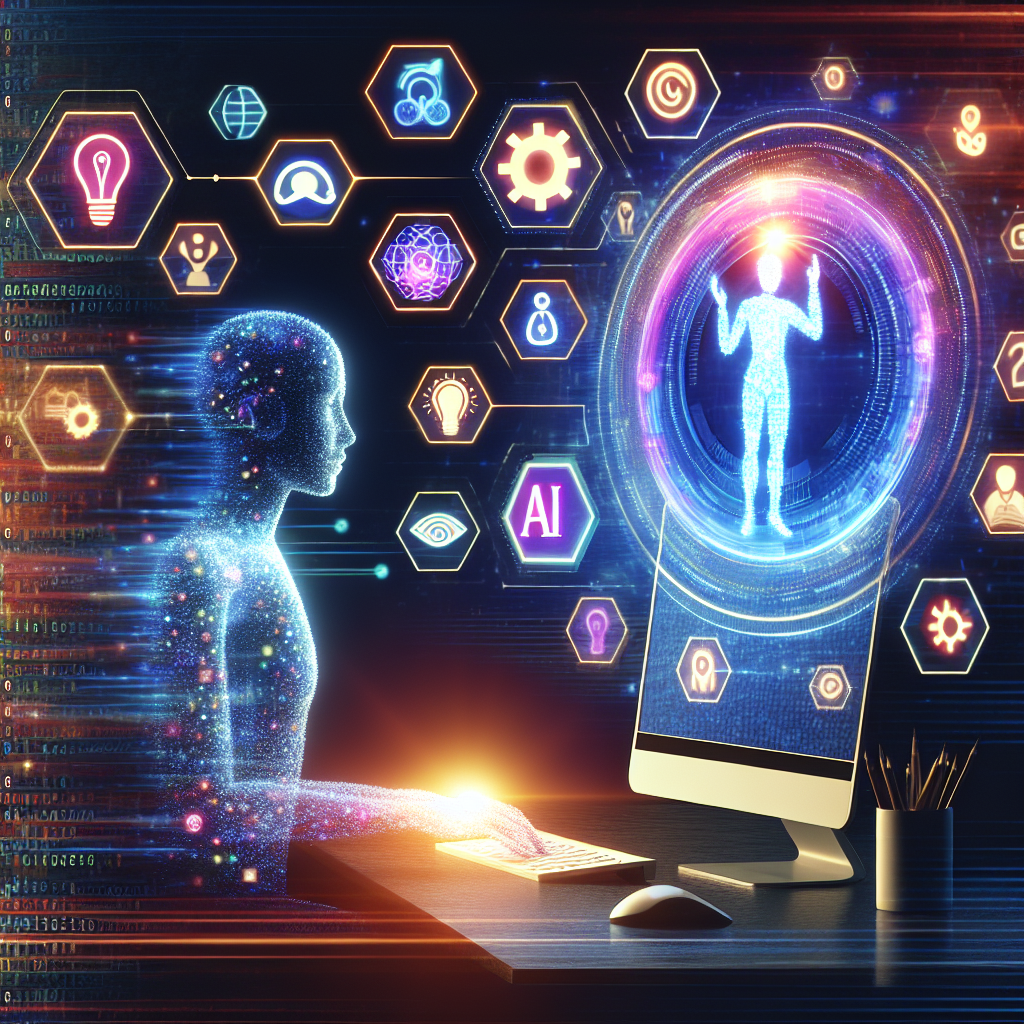Generative AI, also known as generative adversarial networks (GANs), has been making waves in the field of artificial intelligence in recent years. It has been used in a variety of applications, from creating realistic images and videos to generating music and text. One area where generative AI is starting to play a significant role is in human-computer interaction.
Human-computer interaction is the study of how people interact with computers and how to design systems that are user-friendly and efficient. Generative AI can enhance human-computer interaction by creating more personalized and engaging experiences for users. In this article, we will explore the role of generative AI in human-computer interaction and discuss its potential applications and benefits.
### How does generative AI work?
Generative AI works by using two neural networks – a generator and a discriminator – that work together to generate new data. The generator creates new data, such as images or text, while the discriminator evaluates the generated data and provides feedback to the generator. This process continues until the generator is able to create data that is indistinguishable from real data.
### Applications of generative AI in human-computer interaction
Generative AI has the potential to transform human-computer interaction in a variety of ways. Here are some of the key applications of generative AI in this field:
1. **Personalized user interfaces:** Generative AI can be used to create personalized user interfaces that adapt to the preferences and behavior of individual users. For example, a generative AI system could generate a unique layout for a website based on a user’s browsing history and interaction patterns.
2. **Natural language generation:** Generative AI can be used to generate natural language responses in chatbots and virtual assistants. This can make interactions with these systems more engaging and human-like, leading to a more satisfying user experience.
3. **Content creation:** Generative AI can be used to create content such as images, videos, and music. This can be particularly useful in design applications, where generative AI can assist designers in creating new and innovative designs.
4. **Interactive storytelling:** Generative AI can be used to create interactive stories where users can influence the course of the narrative. This can create more engaging and immersive experiences for users.
### Benefits of using generative AI in human-computer interaction
There are several benefits to using generative AI in human-computer interaction:
1. **Personalization:** Generative AI can create personalized experiences for users, making interactions more engaging and relevant.
2. **Efficiency:** Generative AI can automate the process of creating content and designing interfaces, saving time and resources for designers and developers.
3. **Creativity:** Generative AI can assist in the creative process by generating new ideas and designs that may not have been otherwise possible.
4. **User engagement:** Generative AI can create more engaging and interactive experiences for users, leading to increased user satisfaction and retention.
### FAQs
1. **Is generative AI the same as artificial intelligence?**
Generative AI is a subset of artificial intelligence that focuses on creating new data using neural networks. While all generative AI is artificial intelligence, not all artificial intelligence is generative AI.
2. **How can generative AI improve user experience?**
Generative AI can improve user experience by creating personalized and engaging interactions, automating the process of content creation and design, and fostering creativity and innovation.
3. **What are some challenges of using generative AI in human-computer interaction?**
Some challenges of using generative AI in human-computer interaction include ensuring the generated data is of high quality and relevant to the user, addressing ethical concerns related to the use of generative AI, and integrating generative AI into existing systems and workflows.
4. **What are some examples of generative AI in human-computer interaction?**
Some examples of generative AI in human-computer interaction include personalized user interfaces, natural language generation in chatbots and virtual assistants, content creation in design applications, and interactive storytelling experiences.
In conclusion, generative AI has the potential to revolutionize human-computer interaction by creating more personalized, engaging, and efficient experiences for users. By leveraging the capabilities of generative AI, designers and developers can create innovative and immersive interactions that enhance user satisfaction and engagement. As generative AI continues to evolve, we can expect to see even more exciting applications and advancements in human-computer interaction in the years to come.

